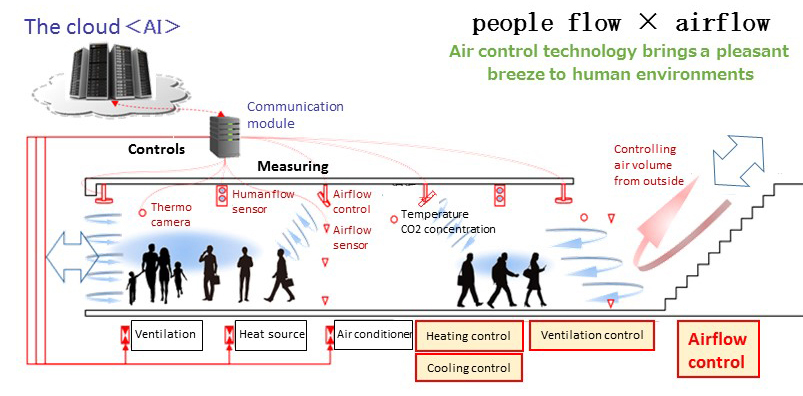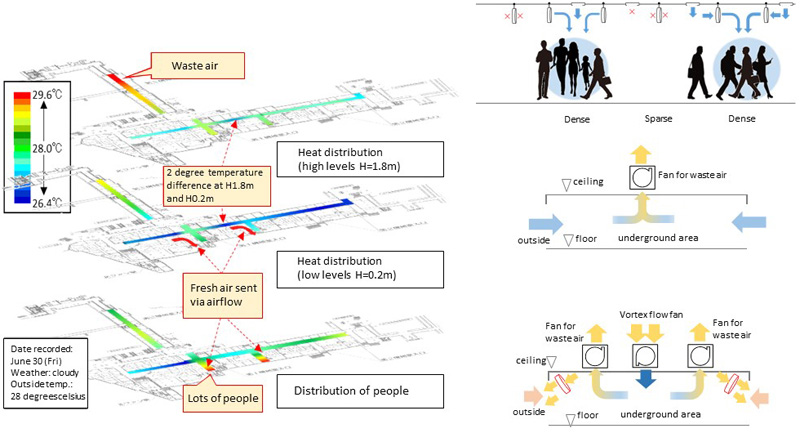Underground complex “Santica” in the heart of Kobe is the target of a 3-year initiative to develop an airflow control system based on AI sensors that detect the movement of people and air currents. The project was commissioned by Japan’s Ministry of Environment as a Low Carbon Technology Research and Development Program. It is a collaboration between Kobe University, Nikken Sekkei Research Institute (NSRI), Sohatsu Systems Laboratory Inc., and Kobe Chikagai Co., Ltd. (location provider).
For 3 years from 2017 to 2019, Kobe University is working with NSRI and Sohatsu Systems Laboratory Inc. to reduce energy costs by developing the next generation of heating, cooling and ventilation technology: controlling air currents based on predicting people’s movements. The goal is a 50% cut in energy and CO2 emissions in the Santica underground area. Nippon Telegraph and Telephone Corporation (NTT) provides technology support for this project by developing the AI that predicts human movement, and contributing technology for optimization and regulation. Kobe City is also a participant, offering support with the aim of troubleshooting and providing services for Kobe’s citizens.
The Sannomiya area in the heart of Kobe city is undergoing large-scale renovations, and the “Santica” underground complex is in a key location. We aim to use this underground-based initiative as a catalyst for making the entire city center “smart”.

Developing the next generation of airflow technology
Stations, airports and partially-open underground complexes have particularly high heating and cooling costs compared to regular buildings. Due to the complex nature of human movement in these areas, effective heating, cooling and ventilation methods are yet to be established. However, recent developments in IoT technology have made it possible to obtain more detailed data about these environments. This enables new airflow controls and creates new possibilities for reducing CO2 emissions.
In addition to controlling airflow around entrances and exits based on the season and time of day, this initiative also understands and predicts the environment (movement and behavior of people, heat data etc.) of the underground complex using sensors for air currents and movement of people. Through smart control of airflow based on this data we aim to minimize heating and cooling costs, saving electricity and reducing CO2 emissions by approximately 50% in the Santica area.
Testing the effectiveness of AI-controlled airflow
Heating, cooling and ventilation is traditionally provided equally throughout a space. In contrast, the technology developed in this initiative will calculate the necessary heating, cooling and ventilation for each area, minimizing energy output. This will add a pleasant fan effect to the air currents. Through this project, we are testing the effectiveness of AI-based real-time data collection, analysis and regulation in predicting human movement and controlling our environment.

